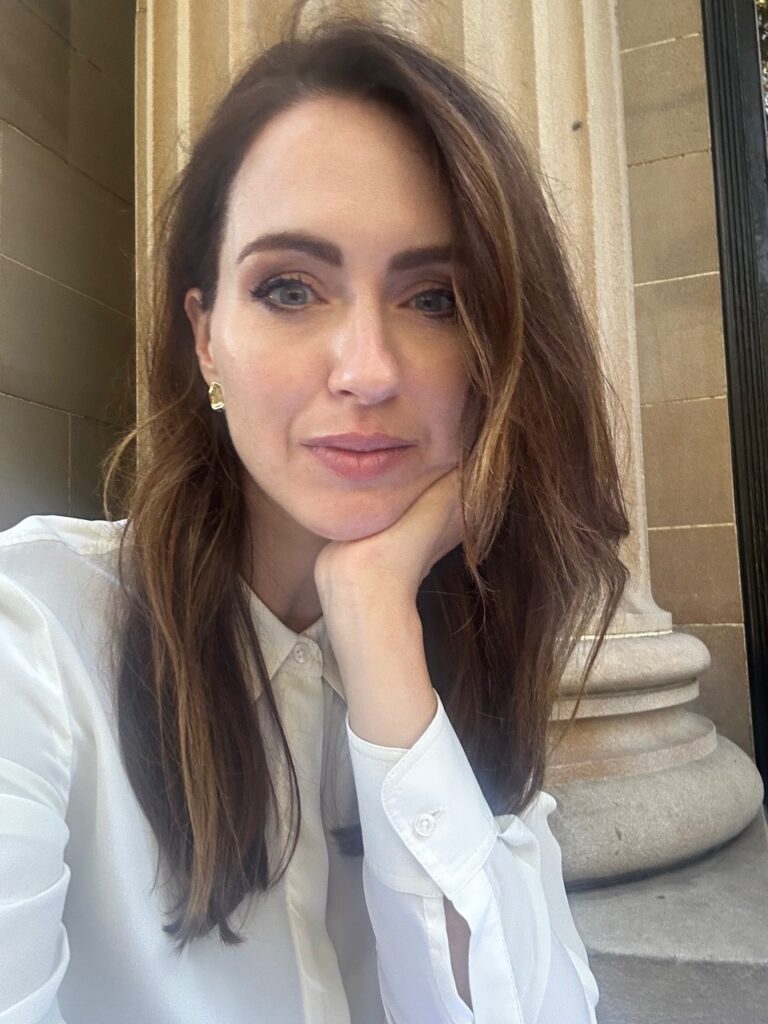Not long after my husband put me down, I stopped crying. The lady is holding a napkin and talking softly about the paperwork. He had seen it all before. I can’t believe I won’t be able to see my family for three weeks. I would be cut off from all contact: no WiFi, no news, no email. As someone with a media website and active social presence, this is terrifying.
I’m in a treatment center that specializes in addiction and mood disorders, but when you take the elevator up to level 1 and pass the nurses’ station with blood pressure monitors, it’s obvious that it’s a hospital. I wheeled my suitcase past patients queuing to get medicine from the glass-walled dispensary. They laugh and laugh and some of them smile at me sympathetically. It feels more like a boarding school than a period scene One flew over the cuckoo’s nest.

The day I checked into a depression and anxiety center
While waiting to see the doctor, a woman in her fifties comes to me. “The first day?” I nod and try to smile at him. “Don’t worry, it’s like that for everyone, but you’ll soon be wrapped up in a great big ball of love. You’ll be better soon.” After a series of tests and lots of questions, the nurse ushered me into her room and asked me to unwrap her.
As you might expect, he’s looking for alcohol, drugs, pills, and cigarettes, but he’ll also confiscate laptops, phones, smart watches, candy, and exercise equipment. Also, hair dryers, nail clippers, and cosmetic products in glass containers pose a risk to those prone to self-harm. Wearing tight and revealing clothing is also prohibited, as it can stimulate sexually active people. He doesn’t even allow writing – only self-help books. Clients are not allowed to exercise excessively except for morning yoga, walking and swimming in the ocean (we are monitored to prevent vigorous swimming).
Basically, anything people can use to escape from feeling is banned, because doctors want us to feel. all feeling like we’ve been pushed away. Most of the people here have spent their lives numbing their pain with drugs, alcohol, shopping, sex, work, or exercise, and I’ve been here for three weeks working to release the emotions I’ve been trying to bury.
Why did I decide to seek help for anxiety and depression?
By some miracle I ended up in a private room with a shared toilet. It’s rare and I’ll be moving into a shared room soon, but I feel like it’s a blessing to have my own space to help me through the rough times of my situation. I roll over the toy rabbit my daughter gave me and cry. I don’t stop crying for two days, I leave a tissue in my wake.
Despite how it sounds, it wasn’t because of a huge breakdown that I decided to check myself into a treatment center. My problem was a long burning one. I was doing great every day and putting a smile on my face on social media, but inside I was crumbling. I had some health issues – chronic neck and shoulder pain.
My neck will come out and I will be in bed or in a neck brace. It seemed to flare up under stress. I also suffered from reflux that woke me up at night with insomnia and nausea. After failing to find a definitive diagnosis, I began to wonder how much of these problems were related to stress and anxiety. But why?
Of course, the work was very stressful, but parenting was taking a toll on me. It seemed to trigger me and bring back painful memories of my childhood. As I researched parenting and emotional coaching, I realized that I would struggle to give my son the support he needed to navigate adolescence.
I felt like I failed him as a parent, so I would listen to parenting books in the car and cry the entire drive. I began to withdraw from public events. When I wasn’t working or taking care of the kids, I just wanted to lie in bed. Yes, I cried a lot. When I realized I was depressed, I went to a psychologist, who told me I had serious childhood trauma and needed to work through it.

What caused my breakdown
I’ve never thought of my childhood as traumatic. I am very aware of my good fortune and my good fortune to have been born in a safe and financially secure place. But when I was an only child, I really suffered through the bitter divorce of my parents. It was a very unhappy time and I often felt alone and helpless. As a mother, I now feel that what I went through as a child was preventing me from being the parent I wanted to be. The psychologist told me that I could do a lot of therapy, or this shocked me – I could consider inpatient treatment somewhere like the South Pacific Private Clinic, because that would help me with group therapy, she thought.
I searched the website but wasn’t sure I was the right candidate to make such a big move. I didn’t see myself as a trauma victim or emotionally disturbed. I wasn’t an addict and I never hit rock bottom. They were worried that I would be laughed out of there. After I filled out the questionnaire on the website, the receptionist called me and offered to give me an assessment. I told my story to their counseling psychologist, who also told me I was traumatized. He said, “Sigourney, if there’s any way you can do this, it will change your life.” He said it with such conviction that I could not ignore it.
I struggled with my decision all week. I talked to a friend who raved about it and found out that it is the only hospital in the country that offers such a comprehensive pediatric trauma program. Outpatient courses are also offered, so you can continue working in a group therapy setting. There have been many reviews of life-changing experiences. I felt so guilty about leaving my children, but my husband and family encouraged me to do the healing I needed. As D-day approached, I scheduled a lot of work content in advance and told anyone who harassed me that I was going on medical leave. In my head, I called it mental health regression.
First morning at the treatment center
And here I am at the first meeting of the morning with great trepidation. All 60 of us go around the room and say our “names, claims, feelings.” Like in an AA meeting, you say, “I’m Sigourney, I’m recovering from anxiety and childhood trauma, and today I’m…scared.”
There are meth addicts, sex addicts, alcoholics, workaholics, and depressed people. But the mood in the room is high. It’s electricity. Cheers to those celebrating their first day, hugs and praises to those celebrating their first week, applause to those celebrating milestones in their second week; There is a lot of love and support from the group for those graduating in three weeks.
People stand up and give impromptu speeches about how staff or colleagues have supported them, or how special their stay has been. I see how wonderful the staff is. On the second day I stop crying and on the fifth day I start to feel alive again.
The days are long and busy. We get up early for yoga or walks, we have daily lectures on psychology, mental health and self-care, and our beginner group classes make them feel like a little family. Evenings are spent doing “group” homework, which involves confronting emotional demons and clearing away painful memories.
Reliving the past with mutual support validates our pain. Gradually, as the days go by, the feeling of peace descends. I begin to understand what I went through as a child and why I was so triggered as a parent.
Connection power
We do movies on Saturday nights, every week on boring, boring nights. We play Wordle on the board, there’s ping pong, and we have singalongs around the piano. There are many wonderful moments of union and friendship. It’s good to see drug addicts recover in the second week and see the sparkle in their eyes and the color of their skin.
Depressed people start to smile and laugh. Being wireless was shocking at first, but soon I would experience a freedom I hadn’t felt since I was a child.
By the time the third week rolled around and I had graduated, I felt stronger. In therapy, I’m starting to let go of the anger and pain I’ve been carrying around since childhood, and I’m starting to struggle with some unhelpful beliefs about myself. Most of all, I am thankful that I was able to find the time to do such intense inner work.
When I finally meet my children again, I am a different person and closer to the mother I want to be.
How I feel three months after treatment
It’s been three months and I’m still going strong. I was also diagnosed with ADHD when I came out, that’s a whole different story, but I’m so glad I’m starting to understand my brain better. I’m a work in progress, but this scale of treatment would be difficult to do in the real world (expensive and time-consuming). The cost of about $17,000 was covered entirely by my health insurance company.
I am still very grateful that my family allowed me to face my demons. I mostly gave up alcohol because I found it interfered with my anxiety and sleep. I don’t want to muddy the waters while doing this work, and I want to be in the best possible headspace to help the kids manage their emotions as they grow.
A lot of trauma is multi-generational, and many of us are locked in a cycle of behavior based on negative beliefs from childhood. I was lucky enough to have someone point out the hidden pain inside me from my anxiety and parenting issues, and now I want to talk about it. This led me to host a podcast called Beautiful Inside, where I talk to women about their mental health journeys and the psychology of beauty and self-care.
I want to show people that they are not alone in their struggles and that ultimately we all need to have more self-compassion. There is no perfect parenting or perfect childhood. It is imperfection that helps us find beauty and meaning. Our therapist, Nicola, reminded us of Leonard Cohen’s words: “Forget the perfect offering. Everything has cracks and crevices. That’s how the light comes in.”
Listen to the Beautiful Inside by Beauticate podcast here
Related
#Marie #Claire #rehab #anxiety


